Para ver la versión en español, haz clic aquí
Hey there, Hive!✨
In this beautiful community's initiative of the month, today we propose the topic of art as a tool of resistance and hope. From a psychological perspective, we can understand art not only as a form of expression, but as a powerful mechanism for survival and human empowerment. This will be my perspective for this post, which you can keep reading for more
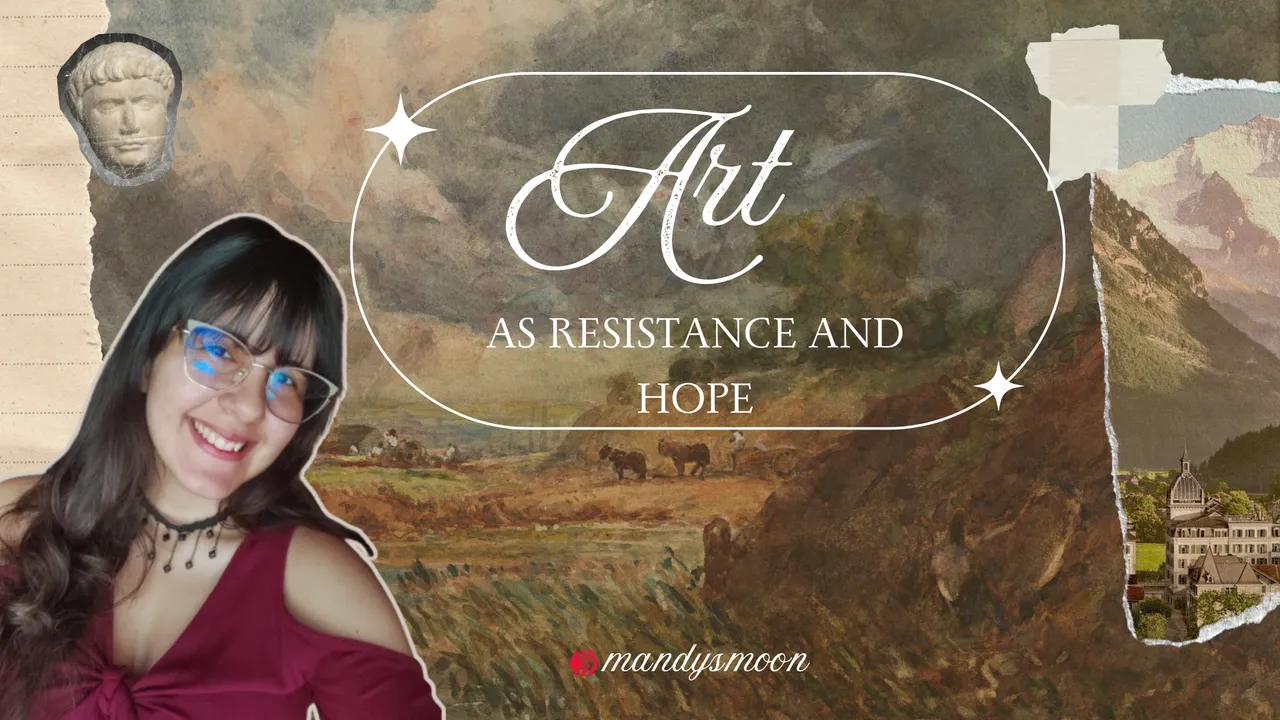

From a psychological perspective, resistance (which is not the same as resilience) is understood as the ability to maintain mental and emotional integrity in the face of adversity. It focuses on maintaining stability and one's original form in the face of pressure. It's like an object that bends but doesn't break, or someone who moves forward despite the pain. Thus, art, in this context, acts as a fundamental tool for achieving such resistance in several ways.
For example, it can be seen as a means of emotional channeling. In situations of oppression, trauma, or conflict, people experience intense emotions such as fear, anger, sadness, helplessness, among many others. Art in its various forms (painting, music, writing, theater) offers a safe channel to express and process these emotions without resorting to violence or self-destruction. This process, similar to a catharsis, helps release accumulated tension and prevent psychological collapse. I think this is the most common way in which art is used, as it is a means of expression that allows us to capture in some way what we may not know exactly how to express better.
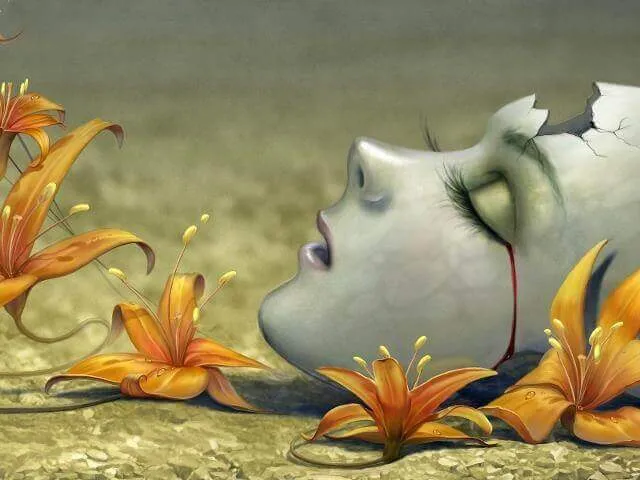
On the other hand, it also fosters solidarity and social connection, since collective art—murals, protest songs, and community theater—fosters a sense of belonging and unity. When people come together to create or enjoy art, they realize they are not alone in their struggle. This solidarity can serve as a powerful antidote to the isolation and hopelessness that often accompany oppression. It then becomes a means of finding a social support network that allows a person to cope with a complex situation, which can lead us to see art as a source of hope.
Hope is a crucial psychological state that drives people to keep going, even in the darkest circumstances. Art fuels this hope in various ways, such as visualizing a better future, since through artistic creation, people can imagine and represent a different future, one free of oppression or with fewer difficulties. These representations are not just fantasies; in fact, they act as a reminder of what can be achieved and what is worth fighting for.
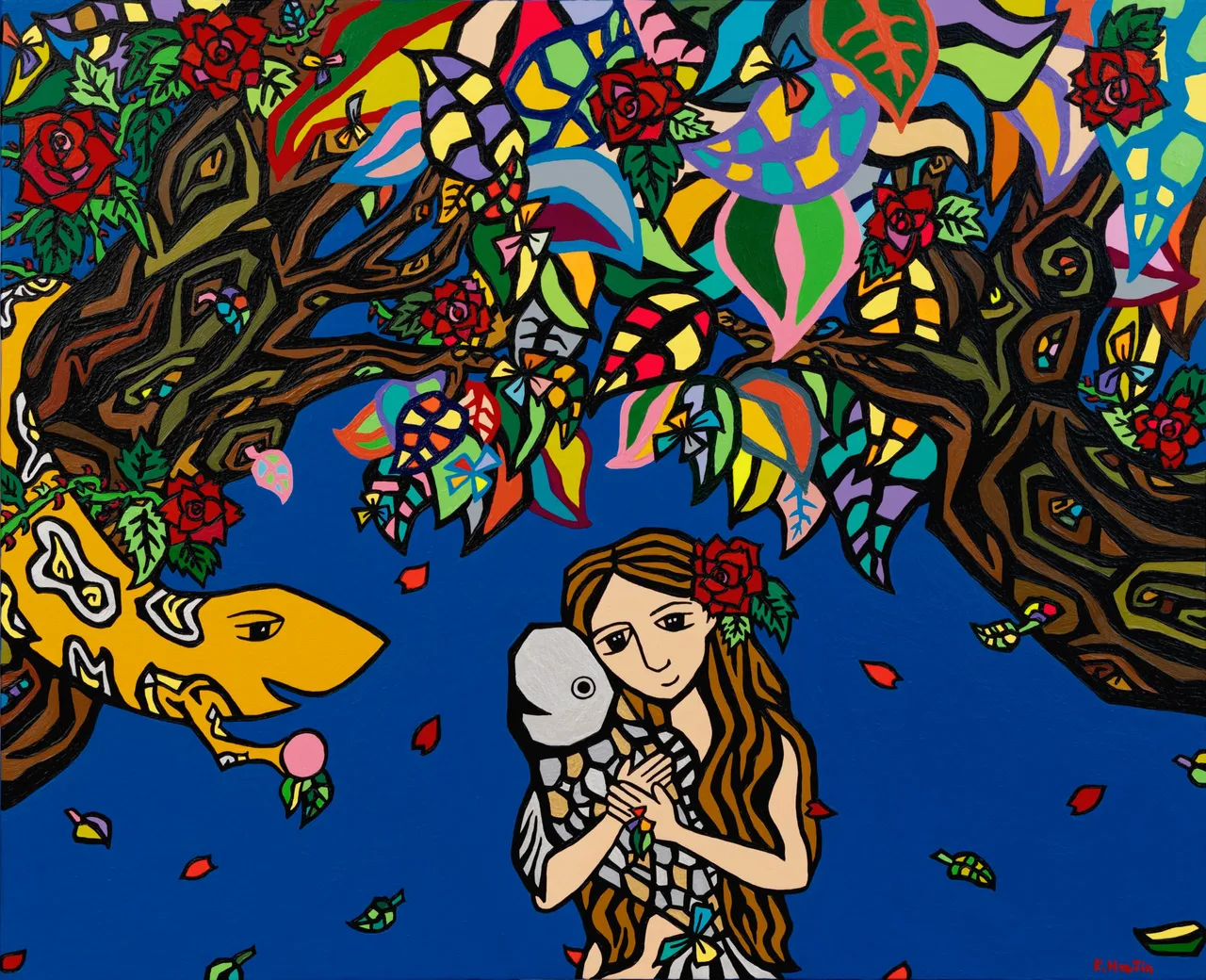
It can also be seen as a sort of witness and memory, since art preserves the memory of injustices, heroes, and past struggles, as well as triumphs, stability, and happy times. By documenting these experiences, art ensures that victims are not forgotten and that history is not erased, and it sets an example to follow in achieving or maintaining general well-being. This generates a sense of purpose and the belief that the current struggle will have a legacy, inspiring future generations, as well as preserving the memory of what we wish to achieve.
Art can even represent individual and collective empowerment, since for the person who creates, the act of transforming an idea into a work of art is an act of empowerment. It demonstrates that they have the power to create, to influence, and to leave a mark on the world. Collectively, works of art become symbols of resistance that inspire others to take action.
So, from a psychological perspective, art is much more than simple aesthetics or a hobby. It can be a therapeutic tool, a symbolic weapon of resistance, and a beacon of hope that helps people navigate trauma, reaffirm their humanity, and build a path toward a better future. It is a reflection of the resistance of the human spirit.
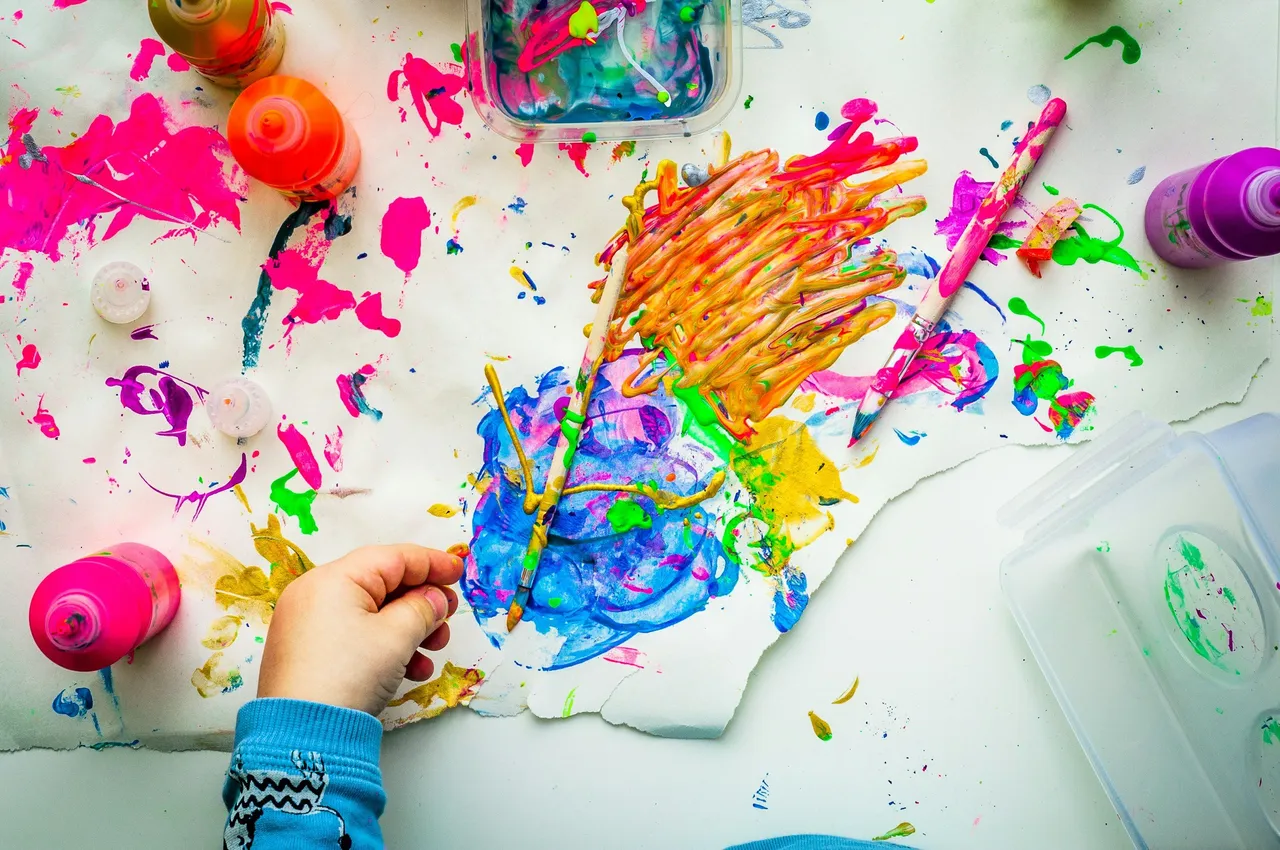




Español
¡Hola, Hive!✨
En la iniciativa del mes de esta bonita comunidad, para hoy se propone el tema del arte como herramienta de resistencia y esperanza. Desde la psicología, podemos entender el arte no solo como una forma de expresión, sino como un mecanismo poderoso de supervivencia y empoderamiento humano. Esta será mi perspectiva para este post, el cual puedes seguir leyendo
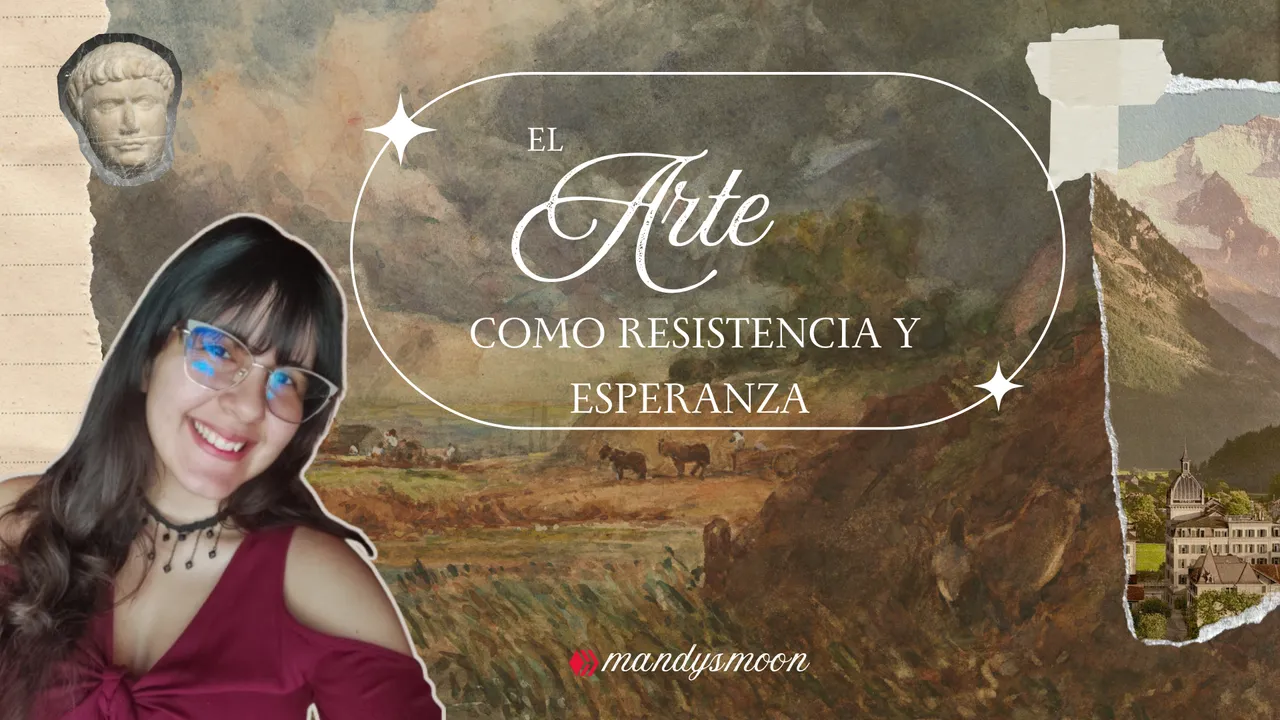

Desde la psicología, la resistencia (que no es lo mismo que resiliencia) se entiende como la capacidad de mantener la integridad mental y emocional frente a la adversidad. Se enfoca en mantener la estabilidad y la forma original frente a la presión. Es como un objeto que se dobla pero no se rompe, o alguien que sigue adelante a pesar del dolor. Así el arte, en este contexto, actúa como una herramienta fundamental para lograr dicha resistencia de varias maneras.
Por ejemplo, se puede ver como medio para la canalización emocional. En situaciones de opresión, trauma o conflicto, las personas experimentan emociones intensas como el miedo, la ira, la tristeza, la impotencia, entre tantas otras. El arte en sus diversas formas (pintura, música, escritura, teatro) ofrece un canal seguro para expresar y procesar estas emociones sin recurrir a la violencia o la autodestrucción. Este proceso, similar a una catarsis, ayuda a liberar la tensión acumulada y a prevenir el colapso psicológico. Creo que esta es la forma más común en la que se utiliza el arte, pues resulta un medio de expresión que permite plasmar de alguna forma aquello que quizás no sabemos exactamente cómo manifestar o expresar mejor.

Por otra parte, también fomenta la solidaridad y conexión social, puesto que el arte colectivo, es decir, murales, canciones de protesta, obras de teatro comunitarias, fomenta un sentido de pertenencia y unidad. Cuando las personas se reúnen para crear o disfrutar del arte, se dan cuenta de que no están solas en su lucha. Esta solidaridad puede resultar como una especie antídoto poderoso contra el aislamiento y la desesperanza que suelen acompañar a la opresión. Entonces se convierte en un medio para encontrar una red de apoyo social que le permite a la persona sobrellevar una situación compleja, lo cual nos puede llevar a ver el arte como motor de esperanza
La esperanza es un estado psicológico crucial que impulsa a las personas a seguir adelante, incluso en las circunstancias más sombrías. El arte alimenta esta esperanza de distintas formas, como la visualización de un futuro mejor, puesto que a través de la creación artística, las personas pueden imaginar y representar un futuro diferente, uno libre de opresión o con menos dificultades. Estas representaciones no son solo fantasías, de hecho, actúan un recordatorio de lo que se puede lograr y por lo que vale la pena luchar.

También se puede ver como testimonio y memoria, puesto que el arte preserva la memoria de las injusticias, de los héroes y de las luchas pasadas, así como de los triunfos, estabilidad y tiempos felices. Al documentar estas experiencias, el arte asegura que las víctimas no sean olvidadas y que la historia no se borre, así como plasma el ejemplo a seguir para alcanzar o mantener el bienestar general. Esto genera un sentido de propósito y la creencia de que la lucha actual tendrá un legado, inspirando a las futuras generaciones, así como guarda el recuerdo de aquello que deseamos lograr.
El arte incluso puede representar el empoderamiento individual y colectivo, pues para la persona que crea, el acto de transformar una idea en una obra de arte es un acto de empoderamiento. Demuestra que tiene el poder de crear, de influir y de dejar una huella en el mundo. Colectivamente, las obras de arte se convierten en símbolos de resistencia que inspiran a otros a tomar acción.
Entonces, desde una perspectiva psicológica el arte es mucho más que una simple estética o pasatiempo. Puede llegar a ser una herramienta terapéutica, un arma simbólica de resistencia y un faro de esperanza que ayuda a las personas a navegar por el trauma, a reafirmar su humanidad y a construir un camino hacia un futuro mejor. Es un reflejo de la resistencia del espíritu humano.



